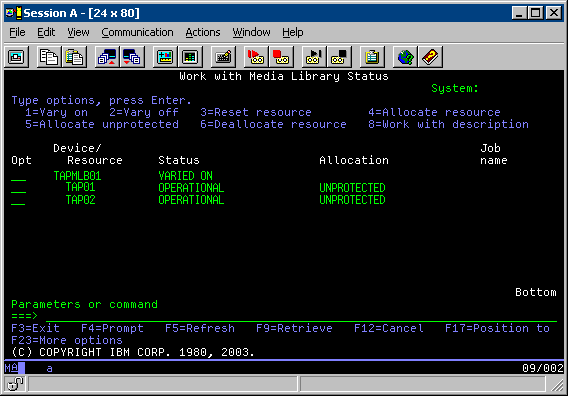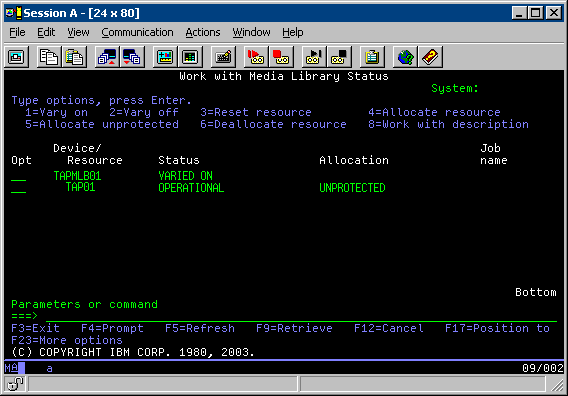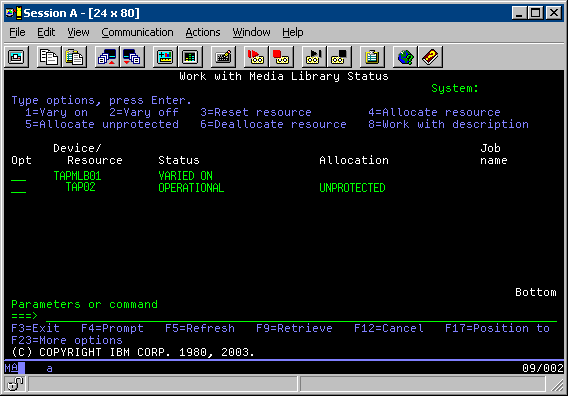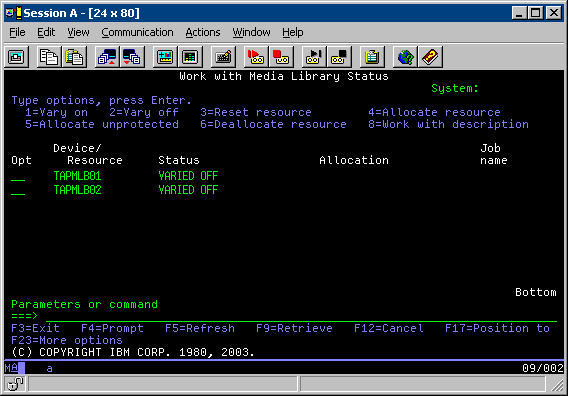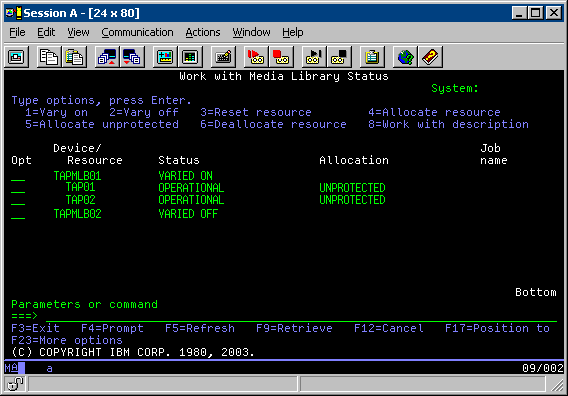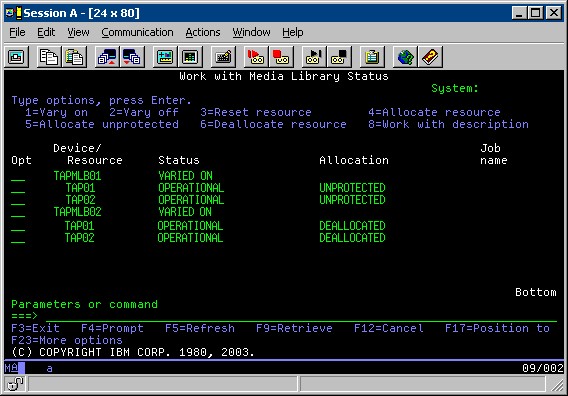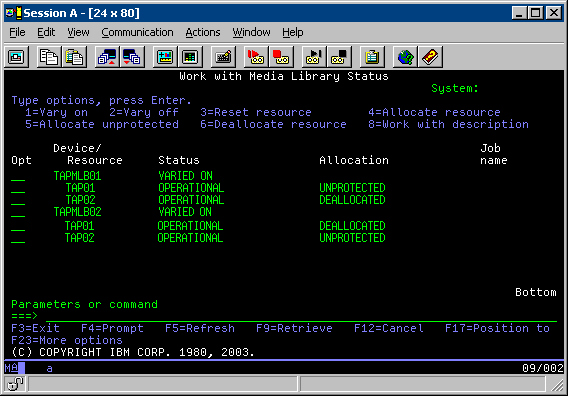This topic provides an example of how to manage tape resources.
Each system in the following example reports two tape subsystems, or resources. These tape resources are connected to the tape library resource. In this example, the tape library resource is the 3494 Data Server. The 3494 Data Server then generates an automatic configuration of a device description for a media library device (MLD) . In this situation, any request to the tape library device (the 3494 Data Server) results in the tape library resource manager allocating which tape resource to use. This simplifies tape management tasks for most users because the system is responsible for the majority of those tasks.
The Work with Media Library Status (WRKMBLSTS) command allows you to view the tape libraries and associated tape resources from a configuration standpoint. Using this command on each of the three systems in the example results in the following displays:
